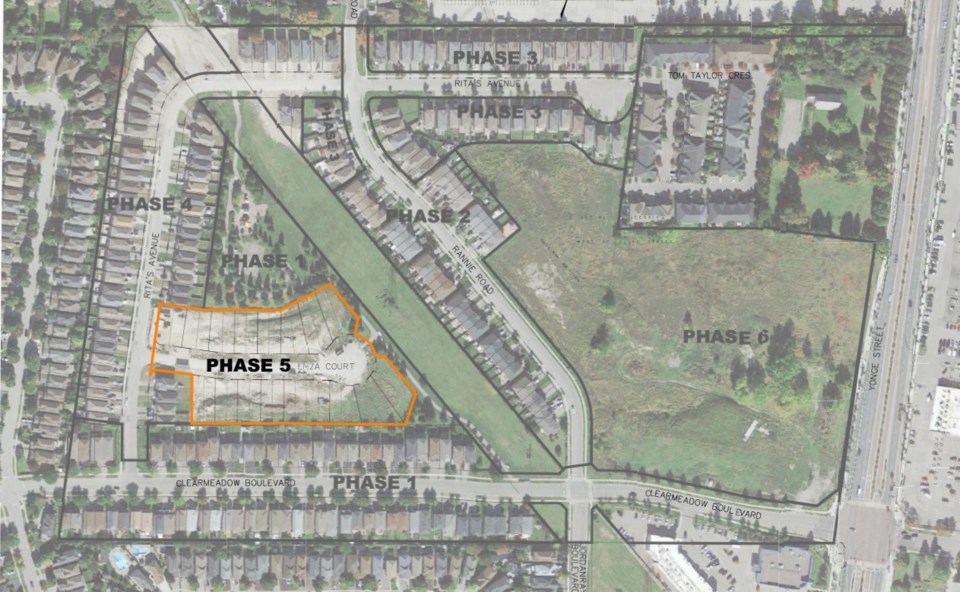As Newmarket residents await more homes, the town has about 1,600 units with approvals ready to progress.
The town has raised concerns about idle developments for several years as provincial pressure mounts to see homes built. Of those 1,600 units that have zoning, draft plan or subdivision approval, 900 are moving toward building permits. The other 700 units have had zoning approval for four years or more, according to development and infrastructure services commissioner Peter Noehammer.
Town officials have said there are cases where builders are sitting too long in progressing their projects.
“We have a pretty healthy number of units in the pipeline already waiting to come forward to get built,” Noehammer said.
The province is planning to build 1.5 million homes in the next 10 years and has asked Newmarket to build 12,000 of those in that timeframe. However, the Regional Planning Commission of Ontario estimates that 1,276,960 units already have submitted applications, approvals, or the right to build in a report released last month.
Hundreds of those ready units lay in Newmarket and Noehammer said they have tried to encourage that in denser areas. Using things like development charge deferral, the town is trying to spur higher-density developments in designated urban centres, Noehammer said.
The town wants to “encourage an environment where developments want to bring those projects forward,” Noehammer said.
But that has not always worked and the town is resorting to new measures in cases where developments stand idle. With the municipality facing a shortage of sewage allocation, council agreed April 17 to attach conditions on two developments that have sat idle for years with zoning approvals.
The town is now threatening to take away the sewage allocation those projects will need to advance if there if the next applications are not submitted by Nov. 3.
Councillor Victor Woodhouse expressed some frustration at the pace of some developments.
“The province certainly feels we need additional housing and we’re in agreement with that,” he said during the meeting. “The town, I believe, has been quite good at being accommodating to developers.”
One of those developments is 281 Main St. North, which the town providing zoning approval for in 2016 for its first phase and in 2021 for its second phase. With no plan of subdivision yet, the town is now setting a Nov. 3 deadline for a submission before taking away sewage allocation.
Nearby, 172 and 178 Old Main St. have also waited for years to see progress after getting zoning approval in 2018. Developers there have planned to build six semi-detached lots for 12 new homes.
Angela Scibberas of Macaulay Shimo Howson previously represented the project and said the individuals who got those approvals decided not to build, selling the property instead. That delayed the build, along with the pandemic and a softening of the market.
“In addition to that, there were technical items that need to be finalized as per the normal process … That took some time,” she said. “The town and owner are now finalizing the subdivision agreement, so once that is completed, the development can be registered and work can commence.”
A softening market dating back to 2017 is what Frank Orsi cited for a lack of progress on Landmark Estates on Rita’s Avenue. The development is also facing a Nov. 3 deadline to register its next subdivision or else lose sewage allocation.
With projects across the province in various stages of approval, RCPO chair Thom Hunt said municipalities need help to progress those units to get built.
“There is no doubt that Ontario is faced with big housing pressures, and while municipalities will do their part to streamline the development review process, they cannot achieve the 1.5 million homes goal alone. We all need to work better together,” Hunt said in a news release.
Building in the future
Newmarket is currently constrained to more than 2,000 new homes until York Region's sewage capacity is expanded, Noehammer said.
But there is land to continue building in the long term through more density. In the long run, Newmarket has planned out 16,000 more units in its urban secondary plan on the Davis Drive and Yonge Street corridors, going out to 2051. Plenty of other units are also under review, he said.
“We want to work with all our partners. The region, the province and other stakeholders, including public and residents,” Noehammer said, but added that building complete community amenities is also important. “Housing is one part of it.”
